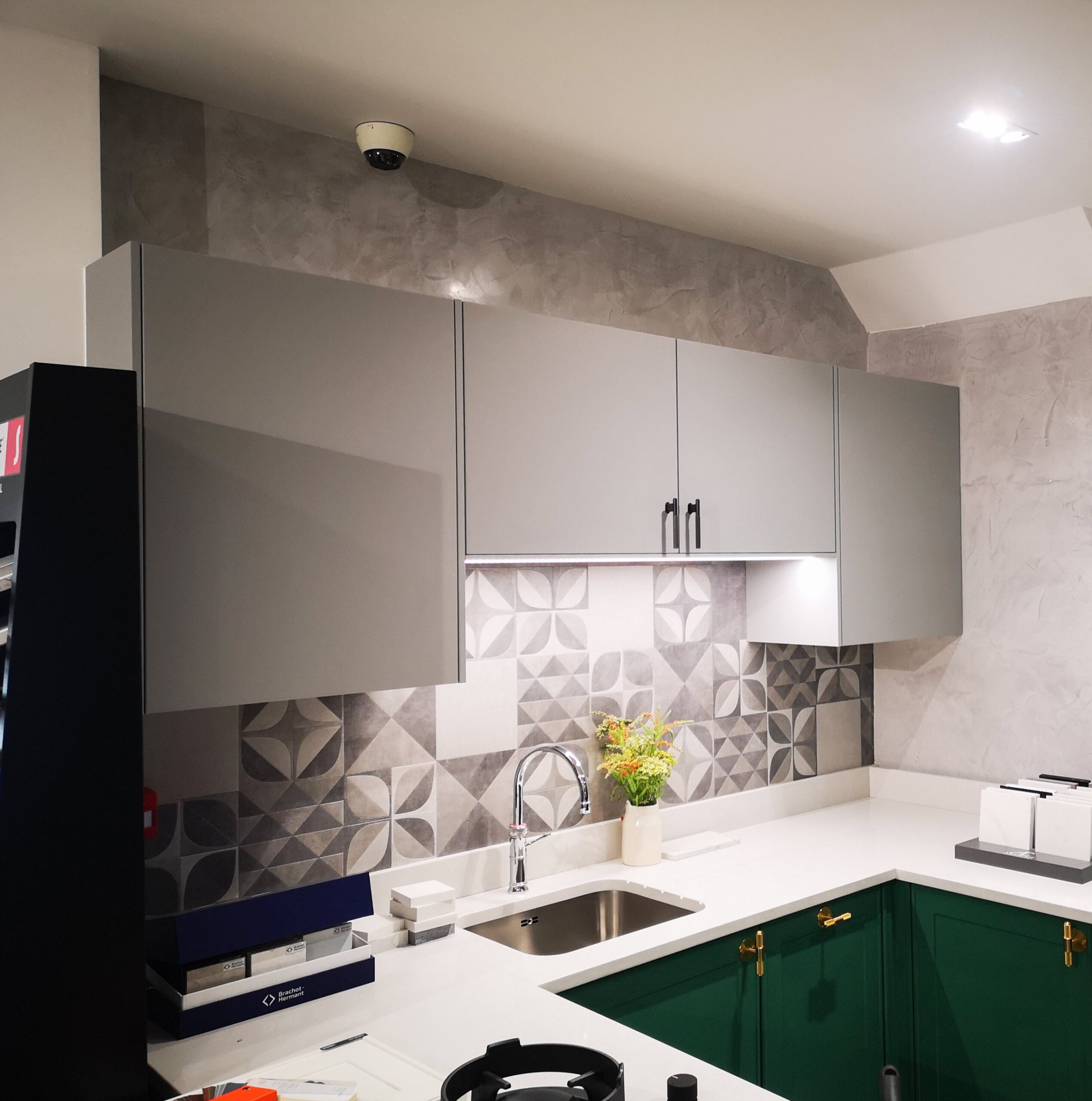Getting the best results with Venetian Plaster is a true art, involving patience, a trained eye for detail, and precise measurements of the materials used – if the ratio isn’t spot on, neither is the finish..
The process involves successive layers being trowelled over one another using a variety of methods. Apply, then left to dry, then repeat. This process may repeat up to seven times before the finish is complete.
The final layer is burnished with a trowel, creating opalescent quality that makes this surface design so desirable. Then the traditional final treatment of Venetian plaster, a layer of Beeswax. It is, spread over thinly and then polished to develop an impressive sheen. As well as looking gorgeous, it also forms a protective shell for the plaster.
Where did it come from?
The origins of plaster itself go back millennia, with recorded uses in Mesopotamia, Egypt, Turkey, and Iran, at about the same time as humans were discovering agriculture. Not that the two are related, it just gives you a good impression of just how long plaster has been around – about the same amount of time as we have been deliberately growing food. Limestone, which is the base for lime mortars, lime putty and lime paint, is as old as the earth itself. It originates in sea beds from many compressed layers of crushed shell which takes thousands, if not millions, of years to form.
Venetian plaster, or polished plaster, became popular much later. Although there was evidence of polished plaster found in The Megalithic Temples of Malta, dating from about 3000BC, its use took off a couple of millennia later, primarily in Greece and Rome.
Around 900BC, Greek architects and builders started using the Egyptians’ recipe for plaster, but with their own modifications, experimenting with different formulations to improve it.
The Romans advanced the process in the 4th Century BC when they discovered the hydraulic set principles of lime. They also began to use volcanic ash and other pozzolanic materials to create plaster that would set faster and harder than ever before.
Then in 360 BC, the Greek philosopher and historian Theofrast documented a detailed process for both making and applying polished plaster.
The Romans later used marble dust in the plaster. Consequently, a harder, smoother finish could be created, as well as making it possible to mould attractive decorations, something that the Romans did regularly. The tragedy is that these techniques were lost with the Roman Empire and not discovered again until the Renaissance period many centuries later.
Gypsum plaster was a popular material for creating decorative adornments on many important buildings during the mid-13th century, such as interiors and exteriors of churches and cathedrals. Animal hair was used to strengthen this kind of plaster, and additives such as beer, milk and eggs were used to improve its plasticity and help it to set.
14th century English builders, particularly the south, would trawl lime putty and lime-gypsum mixes onto wooden-framed buildings as a decorative plaster.
Marmorino, now well known as a classic Venetian plaster, was developed shortly after in the 15th Century. Made from crushed marble and lime putty, which can be tinted to give a wide range of colours, it was devised by highly-skilled Venetian workers and used for the external coating of buildings.
Scagliola was created 16th Century Bavaria. Made from a mix of gypsum plaster, lime or marble dust, animal glues and pigments, it was a new kind of highly decorative plaster. The finish was highly polished and could imitate marble and other hard stones. The Bavarians may have created it, but it was perfected by Italian monks a century later.
While Italian monks were perfecting scagliola, Italian artists invented the sgraffito technique (from graffiare meaning “to scratch”), which involved applying layers of plaster tinted in contrasting colours to a moistened surface, and then scratching the surface so as to reveal parts of the underlying layer. An early example of this, though now sadly quite faded, can be seen on one facade of the Palazzo Massimo in Rome

Since then, polished plaster has been known by a variety of names from Venetian plaster to Stucco and even Spatulato plaster. The improvements and variations that the technique has evolved over the centuries mean it has always remained the most impressive and versatile of decorative plaster finishes, often giving results so beautiful that it is difficult to believe it is actually a plaster finish on display.

